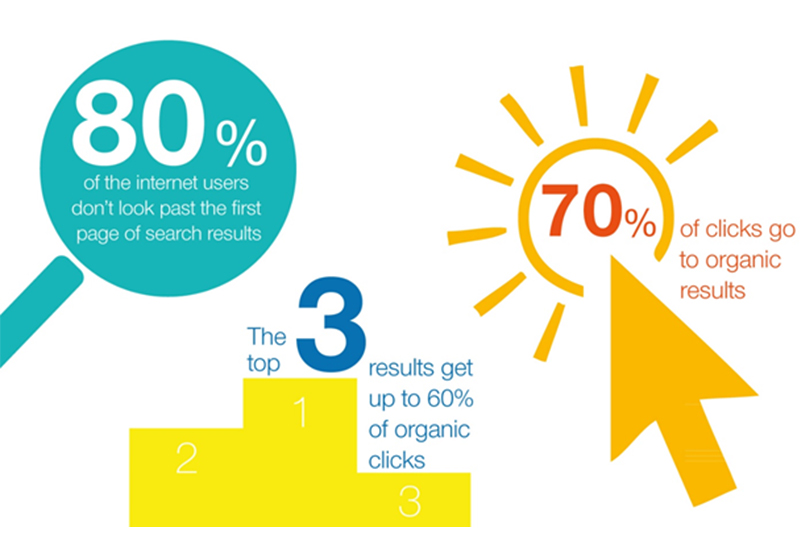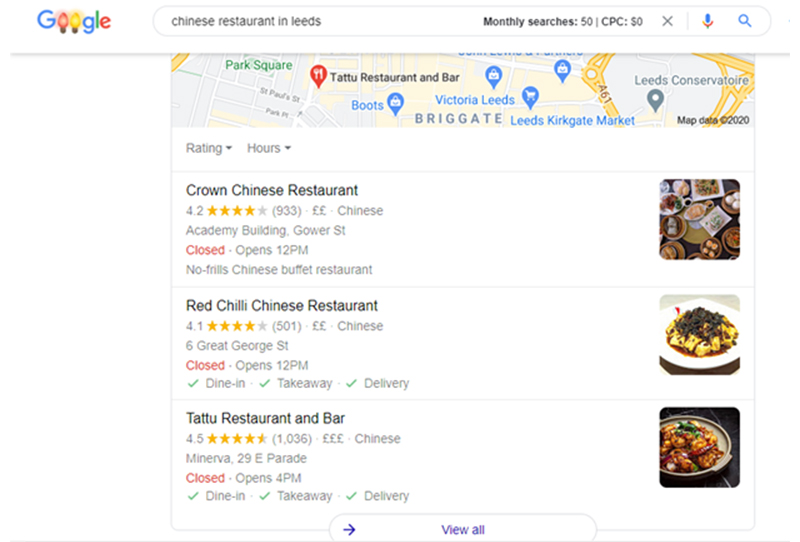9 Effective SEO Tips You Can Do Yourself for Free
9 Effective SEO Tips You Can Do Yourself for Free
SEO optimization comes with a lot of ups in terms of business growth, but it has some downs too. Such as the time and money you have to invest.
If you’re short on time but have the money, its best to pay for professional SEO services.
But if it’s the expenses that worry you, I’ve got some easy SEO tips you can do yourself without having to spend as much as a single penny!
Ready?
Let’s get into this!

A Bit on the Basics of SEO
You must’ve already been told numerous times to optimize your business’s online presence for SEO.
If you think it isn’t worth the effort, time, or money, sorry to burst your bubble, but SEO is actually quite effective.
Although many claim SEO is dead, or would be soon gone, it’s still very much a part of digital marketing and can immensely affect your business growth online.
How?
- By making your products and services more visible to potential customers just when they’re looking for it
- By increasing the flow of organic traffic to your site
- By attracting customers who’re at the very bottom of the sales funnel and ready to buy from you
- By improving your brand image and raising brand awareness
These are just some of the benefits. Have a look at these stats below and you’d know why SEO is really worth it:

Now …
Let’s move on to the real question:
Can you do SEO yourself?
Many would say no, but the real answer is YES, you can!
And not just the content creation part, but also the keyword research, link-building, URL optimization, title tags, meta tags, and so on.
Although it’s best to hire a digital agency, if you have a basic understanding of SEO, you can do it on your own by following the simple tips I’ve shared in this article.
But before getting started with the DIY tips, here are 5 fundamental steps to successful SEO:
- Figuring out what your potential customers are searching for online
- Knowing how to optimize your web pages for the target keywords you wish to rank for
- Making sure that you optimize both for search engines and humans, and that your site is visible to both
- Getting quality backlinks to your site
- Measuring your SEO success and optimizing continuously
Know who your customers are and which target keywords you should optimize for?
It’s time to get to the tips!
DIY SEO Tips That Can Help You Save Money
Let’s consider this scenario:
You own a small business in Leeds, UK, and want to optimize your online presence to reach the huge number of potential customers searching for businesses like yours on Google.
What would your first step be?
Obviously, narrowing down the list of keywords you’d like to rank for – keywords that your “ideal” customer would be typing in Google’s search bar.
Such as, if you’re a Chinese restaurant owner in Leeds, your prospects may be the ones searching for “best Chinese restaurant in Leeds” or “best Chinese food in Leeds”.
Apart from this, here’s our list of DIY SEO tips:
- Optimize Your Title Tags
- Master Your Keyword Research Skills
- Identify and Understand Your Competitors
- Map Primary and Secondary Keywords
- Optimize Your Entire Website
- Regularly Create and Upload Quality Content
- Create High-Quality Backlinks
- Build and Optimize Your Social Media Profiles
- Learn How to Measure and Analyze
1. Optimize Your Title Tags
Title tags are what your customers see before visiting your website, and what a search engine sees while crawling it.
Relevant title tags can bring in relevant traffic and help with your rankings for relevant searches. All you need to do is a bit of tweaking, for instance, add in keywords such as “Chinese Food” or “Chinese Cuisine”.
If optimizing for local SEO, you can also add the location of your business and the areas where you provide services. Such as “Chinese Cuisine | Leeds” or “World Famous Chinese Food | Leeds”, etc.
Also, to attract local customers, ranking in Google’s Local-3 Pack is quite essential because most of the searchers don’t even look past that. Here’s what I’m referring to:

For this, you’d need to create a Google My Business account, verify your address and business listings, and work on your site’s local SEO optimization. It’s very much similar to national and international SEO, except you’d just have to add your business location in the keywords you’re optimizing for.
2. Master Your Keyword Research Skills
The first step to keyword research is understanding your target audience and developing an idea of what they’d be typing in their search bars.
And don’t just assume that you know the search queries of your prospects – do the research.
How?
By using tools such as Google Keyword Planner, Keywords Everywhere, Ubersuggest, etc.
Check the number of monthly searches being conducted for a certain keyword, look at the CPC rate, analyze the competition and then choose target keywords accordingly.
If you’re a small business owner with a website that doesn’t have much domain authority, try targeting keywords with low competition yet a good number of monthly searches. Or, you can target the highly competitive and search intent keywords by running Google Ads campaigns while simultaneously working on your website’s SEO.
3. Identify and Understand Your Competitors
It’s important to know who your organic-search competitors are – including not just the sites or businesses that sell the exact same products / services, but also the informational sites that’re competing for similar keywords.
Analyze their websites and how they’ve targeted the keywords. Look at the content they’ve shared, find gaps, and work on creating unique content that’s informative and has value for customers.
Also, look into their customer reviews on social media and work on improving your offerings accordingly.
4. Map Primary and Secondary Keywords
You can’t add all the high-value keywords on a single web page. All the web pages should be optimized for separate primary and secondary keywords.
Create an Excel spreadsheet of all the important pages of your website and map unique keywords to each page. In case there’re still some unassigned keywords left, create new web pages.
Further, optimize your blog posts for long-tail keywords such as “how to get stains our of wool rug”.
5. Optimize Your Entire Website
With your keyword plan in hand, the next step is to start working on on-page SEO.
Create and upload content on web pages and add in the specified keywords. You can add new content sections as well, such as blogs or FAQs.
Throughout the process, make sure the textual content added is relevant and includes the keywords that searchers commonly use.
6. Regularly Create and Upload Quality Content
You must’ve heard the phrase “content is the king”.
Well, it is actually true to a certain level.
Keep updating your on-page content and creating new blog posts.
Insert your target keywords, make sure the posts are informative and unique, and if things aren’t going smoothly for you, learn how to create content that ranks. Or, you can also hire professional content writers who know exactly how to trap your target audience through engaging blog posts and creative web content.
7. Create High-Quality Backlinks
Backlinks tell Google that your content is informative, unique, and worth sharing.
What you require is high-quality content for acquiring links from relevant sites, while you continue your content marketing efforts (guest posting, etc.) to increase your link equity.
You can contact relevant web owners directly and arrange backlinks to your site. However, remember the website must have a high domain authority and should be receiving the kind of traffic you’re looking for.
8. Build and Optimize Your Social Media Profiles
Nowadays, social media marketing is one of the most effective digital marketing strategies. It helps you connect with audience and build strong customer relationships, while increasing your brand awareness and improving brand image.
Analyze your competitors and check the social media channels they’re marketing on. There are high chances that the strategies working for them would work for you too.
9. Learn How to Measure and Analyze
SEO is not a one-time thing, rather it’s an on-going process, and you can’t continue working on it unless you’ve learned how to measure and analyze.
For this, you’d require to develop a basic understanding of Google Analytics, or any other such tool, to know which pages are performing well and which ones need optimizing.
In a sense, SEO doesn’t end with achieving high rankings on SERPs. If you want to stay on the top:
- Keep measuring your SEO success and analyzing your site’s performance
- Keep uploading unique and high-quality content
- Keep working on off-page and on-page optimization
Lastly, know that Google updates its algorithm and ranking factors almost every single year. Hence, its important to keep reading SEO related articles and stay up-to-date.
Can’t handle it all on your own?
Find the best SEO services in Leeds and let the experts help you grow!
By - 23 Dec 2020
Most Viewed Articles
-

By - 16 Mar 2020
9 Key Elements of an Effective Social Media Marketing Strategy -

By - 28 Sep 2020
8 Essential SEO Copywriting Rules You Need to Follow -

By - 27 Mar 2020
5 Major Factors that can Impact Your Local SEO in 2020 -

By - 29 Jan 2021
Digital Media Marketing Agencies: 7 Predictions for 2021 -

By - 01 Oct 2021
6 Rank Tracker Tools to Check Google Rankings
